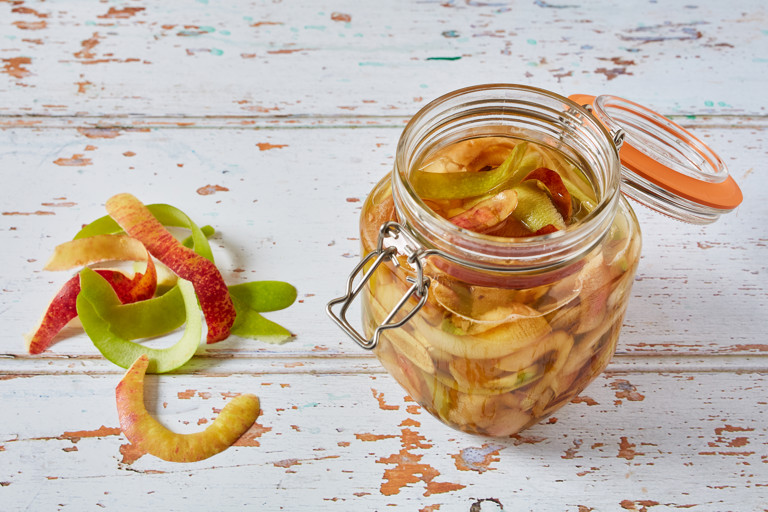Fruit peel vinegar
This fruit peel vinegar recipe is a great way to use up fruit peels and cores which would otherwise be discarded. Victoria uses apple and pear peelings but pineapple or melon skins work equally well. It may seem a little daunting, but making your own vinegar is very satisfying and, with a little patience, very easy to do! Check out Victoria's other recipes which make the most of peels and skins here.
I’ve used bought live vinegar to make this, but you can make your own vinegar mother from leftover wine. It takes time and patience and the wine must be left covered and undisturbed in a cool, dark place for at least eight weeks, but afterwards you should be left with a gelatinous blob with tendrils ready to be fed as a starter for plenty of exciting and economical homemade vinegars.
Ingredients
Metric
Imperial
- 500g of fruit peelings, a mix of apple, pear, pineapple, melon or anything else you have to hand, cut into small pieces
- 80g of sugar
- 140ml of vinegar, containing a live mother, either homemade or shop-bought
Equipment
- 2L Kilner jar
Method
Get in touch
Please sign in or register to send a comment to Great British Chefs.



